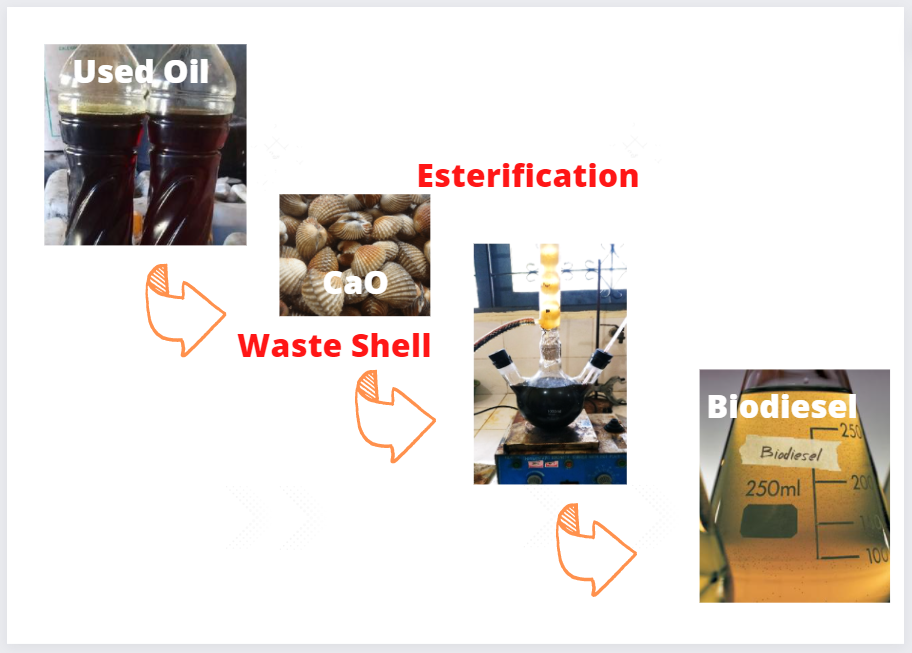
Utilization of Waste Shells as CaO Catalyst in Biodiesel Production from Used Cooking Oil
DOI:
10.29303/aca.v5i1.69Published:
2022-04-17Issue:
Vol. 5 No. 1 (2022)Keywords:
used cooking oil, oyster shells, transesterification, biodieselArticles
Downloads
How to Cite
Azzahro, U. L., & Broto, W. (2022). Utilization of Waste Shells as CaO Catalyst in Biodiesel Production from Used Cooking Oil . Acta Chimica Asiana, 5(1), 147–152. https://doi.org/10.29303/aca.v5i1.69
Downloads
Download data is not yet available.
Metrics
Metrics Loading ...






 Indonesian Chemical Society, Chapter Nusa Tenggara. Jalan Majapahit 62 Mataram, University of Mataram, 83125, Indonesia
Indonesian Chemical Society, Chapter Nusa Tenggara. Jalan Majapahit 62 Mataram, University of Mataram, 83125, Indonesia





